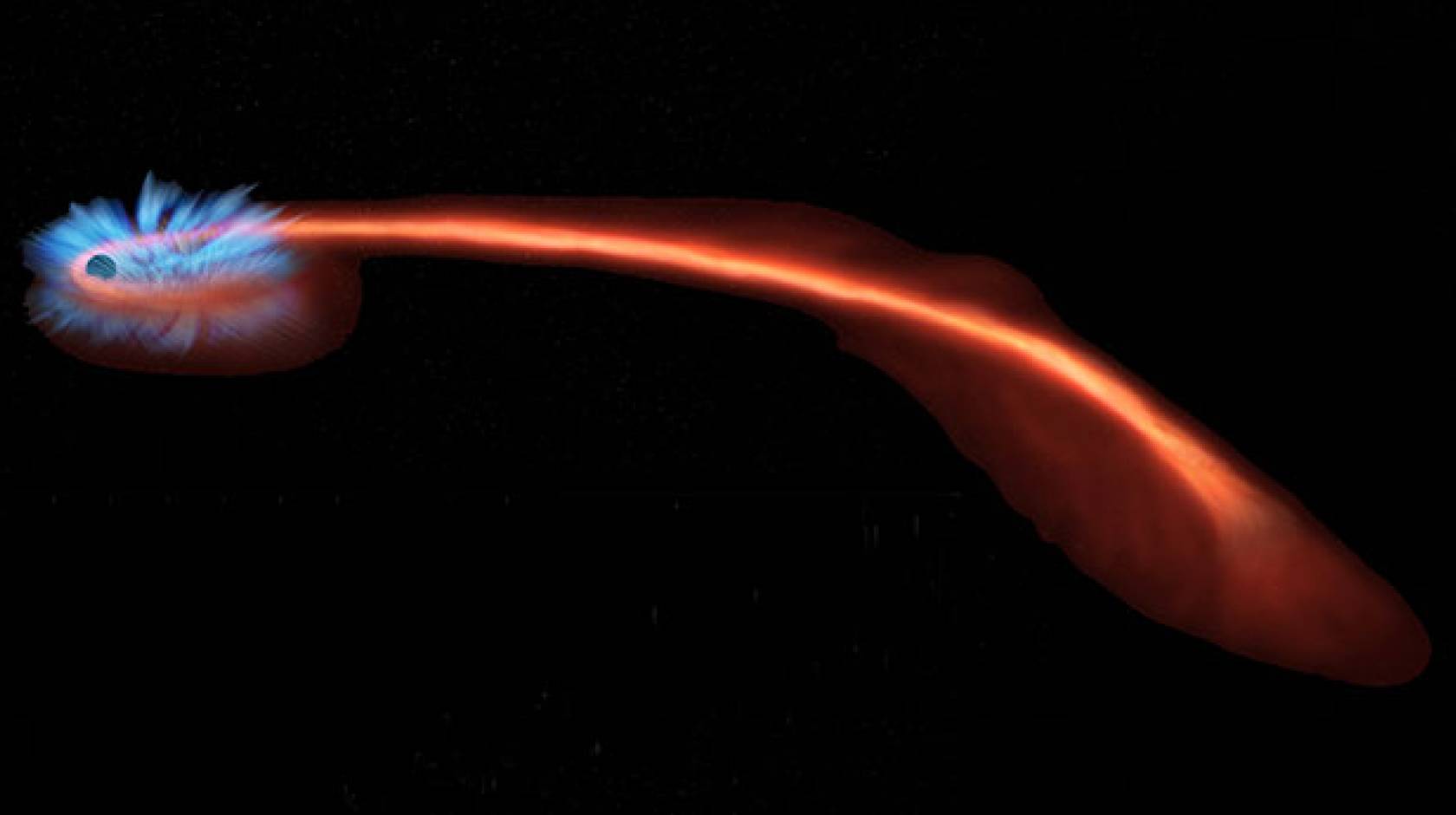Tim Stephens, UC Santa Cruz

New details about what happens when a black hole tears apart a star have been gathered by a trio of orbiting X-ray telescopes, giving scientists an extraordinary opportunity to understand the extreme environment around a black hole.
When a star comes too close to a black hole, the intense gravity of the black hole results in tidal forces that can rip the star apart. In these events, called "tidal disruptions," some of the stellar debris is flung outward at high speeds, while the rest falls toward the black hole. This causes a bright flare of radiation that can last for a few years.
NASA's Chandra X-ray Observatory, Swift Gamma-ray Burst Explorer, and ESA's XMM-Newton collected different pieces of this astronomical puzzle in a tidal disruption event called ASASSN-14li, originally discovered in an optical search by the All-Sky Automated Survey for Supernovae (ASAS-SN) in November 2014.
Theory confirmed

This is the first tidal disruption event from which astronomers have been able to observe radiation emitted at both X-ray and optical wavelengths, according to Enrico Ramirez-Ruiz, professor and chair of astronomy and astrophysics at UC Santa Cruz. The observations confirm a theoretical model of tidal disruptions developed by Ramirez-Ruiz and James Guillochon, a former UCSC graduate student now at Harvard University. They are both coauthors of a paper on the new findings published Oct. 22 in Nature.
According to their model, X-rays are emitted from near the "event horizon" where stellar debris is falling into the black hole. The optical flare is the result of X-rays being absorbed and re-emitted at longer wavelengths by material that was flung outward from the black hole. In past observations of tidal disruptions, astronomers have only been able to see this re-emitted light.
"The black hole is behind a cloak of debris that changes its appearance, but now we are able to see the inner beast," Ramirez-Ruiz said. "James and I had predicted that we should be able to see both X-ray and optical emissions."
The event occurred near a supermassive black hole estimated to weigh a few million times the mass of the sun. The black hole is located in the center of PGC 043234, a galaxy that lies about 290 million light years from Earth, making it the closest tidal disruption event discovered in a decade.
"We have seen evidence for a handful of tidal disruptions over the years and have developed a lot of ideas of what goes on," said Jon Miller of the University of Michigan in Ann Arbor, who led the study. "This one is the best chance we have had so far to really understand what happens when a black hole shreds a star."
Surge of X-rays
After the star is destroyed, the black hole's strong gravitational forces pull most of the remains of the star toward it. This infalling debris is heated to millions of degrees and generates a huge amount of X-ray light. Soon after this surge of X-rays, the amount of light decreases as the material falls beyond the black hole's event horizon, the point beyond which no light can escape.
Gas often falls toward black holes by spiraling inward in a disk. But how this process starts has remained a mystery. In ASASSN-14li, astronomers were able to witness the formation of such a disk by looking at the X-ray light at different wavelengths (known as the "X-ray spectrum") and tracking how that changed over time. The researchers determined that the X-rays being produced come from material that is either very close to or is actually in the smallest possible stable orbit around the black hole.
"This proves that the accretion disk is the energy source for the X-ray emissions," Ramirez-Ruiz said. "But it is not a naked disk. It's cloaked by a lot of material that gets ejected during disk formation, and this ejected material leaves imprints in the X-ray emissions."
Ramirez-Ruiz and Guillochon plan to publish a more detailed theoretical analysis of the observations in a forthcoming paper. Astronomers also hope to find more events like ASASSN-14li, which they can use to continue to test theoretical models about how black holes affect their environments and anything that might wander too close.
NASA's Marshall Space Flight Center in Huntsville, Alabama, manages the Chandra program for NASA's Science Mission Directorate in Washington. The Smithsonian Astrophysical Observatory in Cambridge, Massachusetts, controls Chandra's science and flight operations. Swift is managed by NASA's Goddard Space Flight Center in Greenbelt, Maryland.

